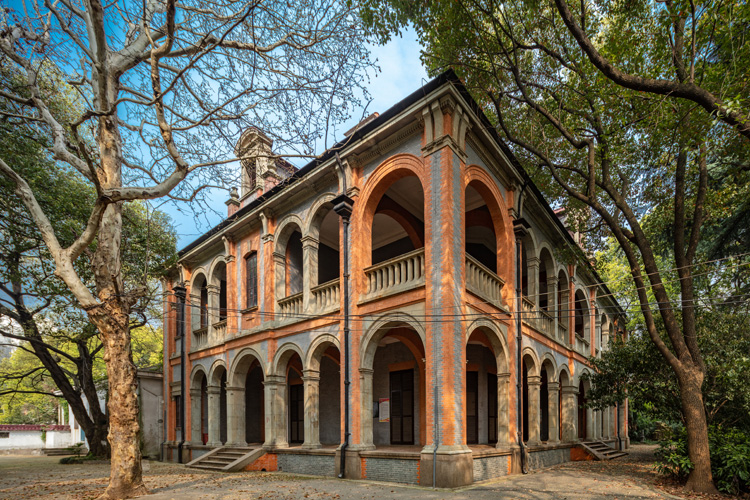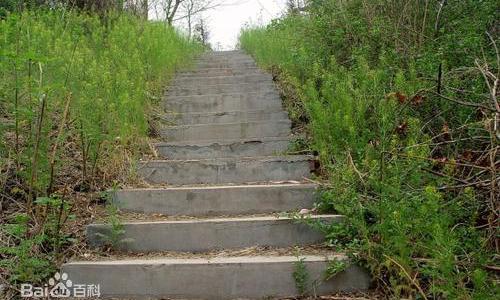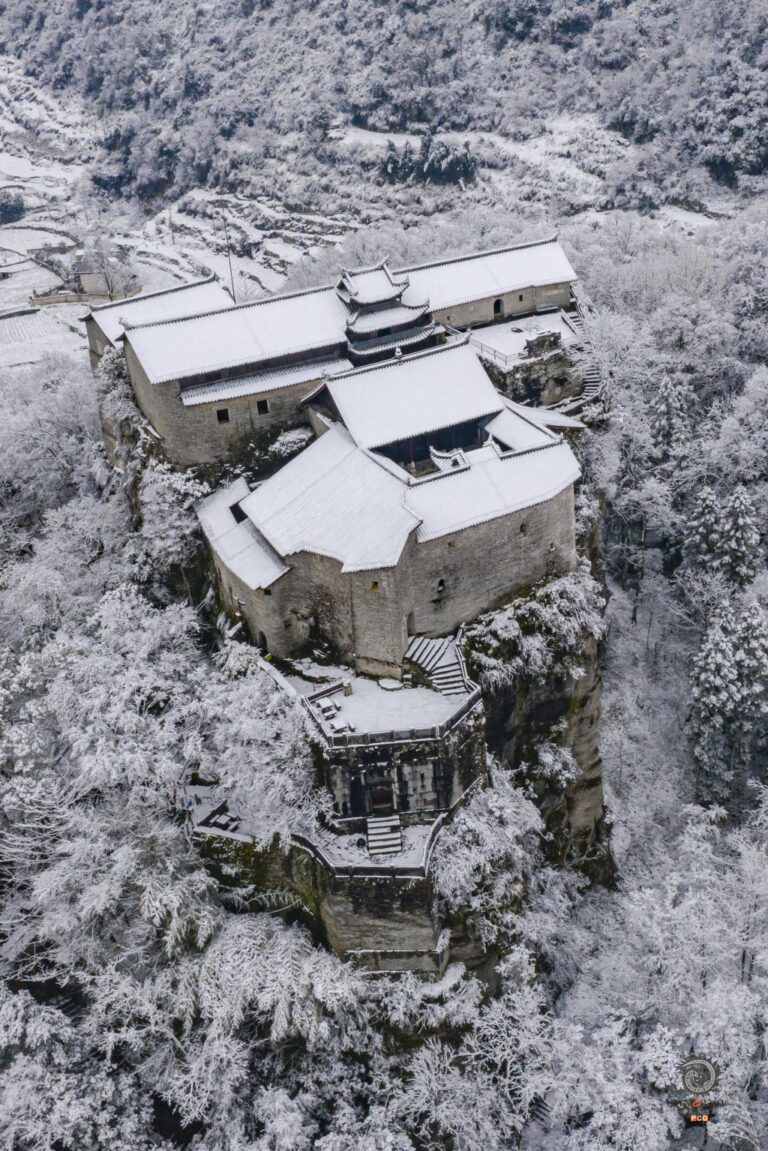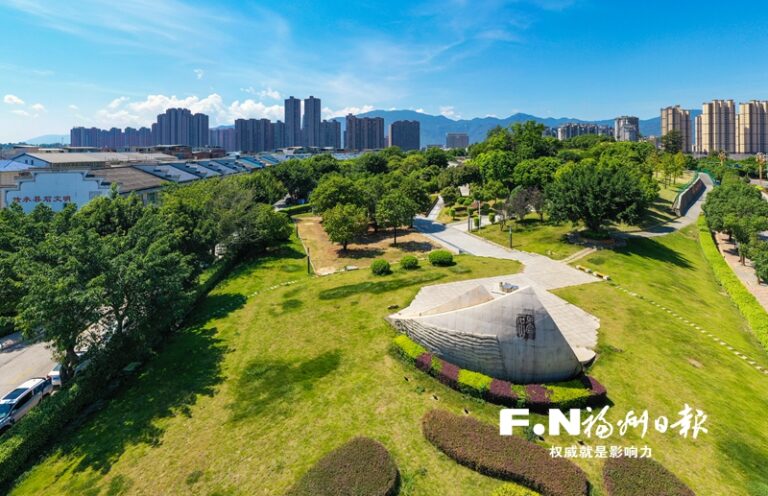Discover the Hidden Treasures of Handan Fahua Cave Grottoes: A Journey Through Time
An Essential Guide to Visiting Handan Fahua Cave Grottoes
In This Guide
- An Essential Guide to Visiting Handan Fahua Cave Grottoes
- The Rich History of Handan Fahua Cave Grottoes
- Main Highlights: What to See at Handan Fahua Cave Grottoes
- Planning Your Visit: A Practical Guide
- Tickets, Hours, and Booking
- How to Get There
- Local Cuisine and Accommodation
- Frequently Asked Questions
- Final Thoughts on Your Trip
Nestled in the picturesque landscape of Hebei Province, the Handan Fahua Cave Grottoes, or Xiangtang Mountain Grottoes, stand as a testament to China’s rich historical and artistic heritage. Often overshadowed by their more famous counterparts like the Yungang and Longmen Grottos, these remarkable caves are a hidden gem waiting to be explored.
Dating back to the Northern Qi dynasty, the grottoes were meticulously carved into the mountainside, showcasing the artistic prowess of ancient artisans. With over 4,000 statues and 30 cave temples, the site not only serves as a visual feast but also as a narrative of Buddhism’s evolution in China. Each grotto tells a story, from the colossal seated Buddha in the Great Buddha Cave to the intricately inscribed scriptures adorning the walls of the Sutra Cave, inviting visitors to step back in time and witness the spiritual fervor that once thrived here.
As you wander through the serene pathways lined with ancient relics, you’ll encounter a blend of breathtaking beauty and profound history. The grottoes, recognized as one of China’s three royal grotto sites, are not just an attraction for history buffs but for anyone who appreciates the intersection of nature and art. The fusion of Buddhist culture with the lush surroundings offers a tranquil retreat, making it a perfect destination for both reflection and exploration.
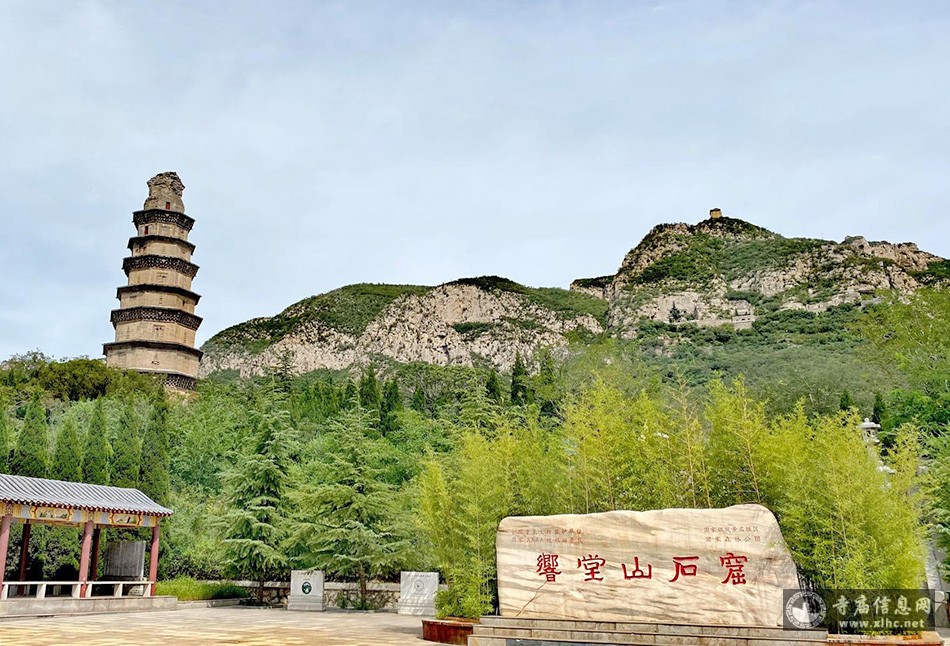
Handan Fahua Cave Grottoes.
Whether you’re an avid traveler or a casual visitor, the Handan Fahua Cave Grottoes promise an unforgettable journey into the depths of China’s artistic legacy. Prepare to be captivated by this extraordinary site, where the echoes of the past resonate through every carved stone and intricate sculpture.
The Rich History of Handan Fahua Cave Grottoes
The Handan Fahua Cave Grottoes, located in the scenic area of Xiangtang Mountain in Handan, Hebei Province, are a remarkable testament to China’s rich Buddhist heritage and artistic achievement. These grottoes, primarily carved during the Northern Qi dynasty (550-577 CE), represent one of the three major royal cave systems in China, along with the more famous Yungang and Longmen Grottoes.
The construction of the Fahua Cave Grottoes was a monumental undertaking, reflecting the Northern Qi’s ambition and devotion to Buddhism. During this period, significant resources were allocated to the artistic expression of religious themes, resulting in the creation of intricate sculptures and vast cave systems. The site comprises numerous caves, the most notable being the North Xiangtang and South Xiangtang grottoes, which are located approximately 15 kilometers apart but share a unified artistic vision.
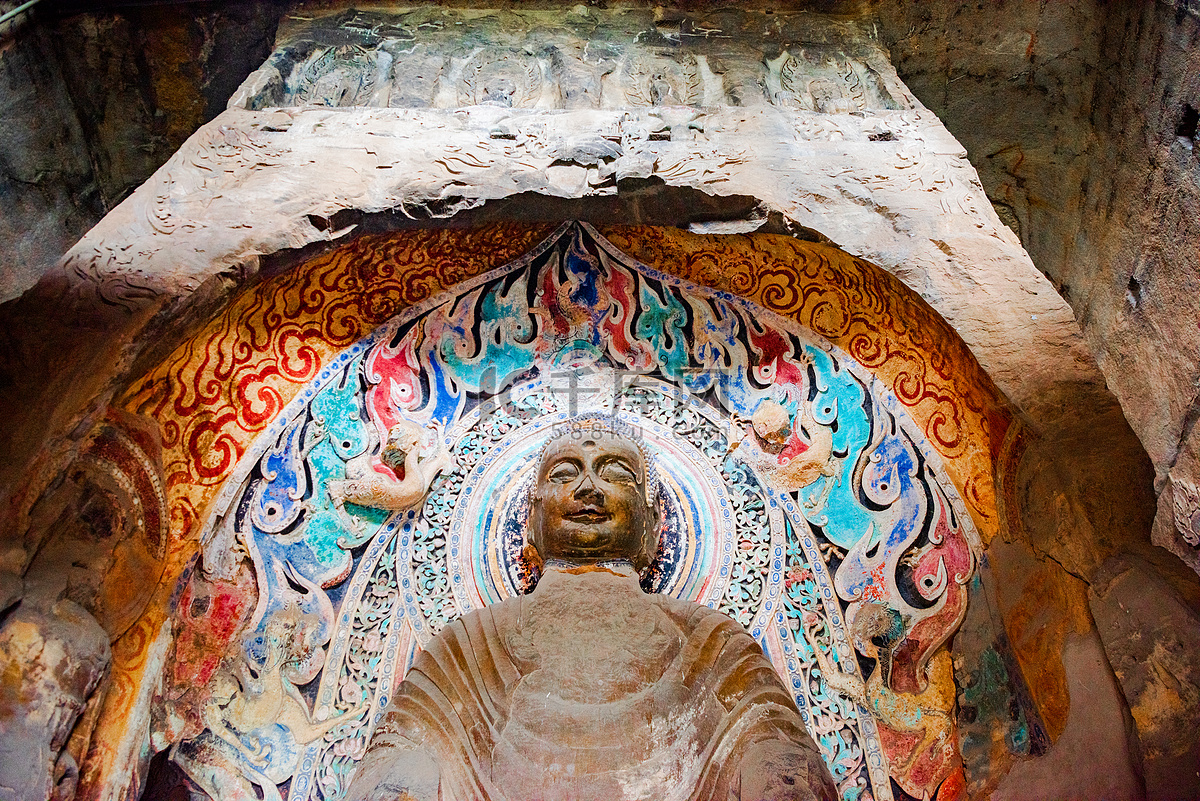
Handan Fahua Cave Grottoes.
The North Xiangtang grottoes are particularly impressive, featuring several major caves adorned with elaborate statues. Among these, the Great Buddha Cave stands out, housing a majestic statue of Shakyamuni Buddha that reaches a height of 5 meters. This cave is celebrated not only for its size but also for the exquisite craftsmanship that showcases the blending of Indian and Greek artistic influences, evident in the decorative motifs and architectural elements.
Another significant feature is the Sutra Cave, renowned for its extensive inscriptions, which include thousands of characters from various Buddhist texts. This cave is often referred to as the “Stone Library” of Chinese Buddhism, providing invaluable insights into the calligraphic styles of the time and the dissemination of Buddhist texts throughout China.
However, the history of the Fahua Cave Grottoes is not without its challenges. Over the centuries, the site has suffered from natural erosion and human intervention, including rampant looting during the late Qing Dynasty and early Republican period. Many statues were removed illegally, while others were destroyed, leaving the site with a poignant sense of loss. Despite these challenges, efforts have been made to preserve what remains and to restore the grottoes to their former glory.
Today, the Handan Fahua Cave Grottoes are not only a cultural and historical treasure but also a popular tourist destination. They serve as a vital link to understanding the spiritual and artistic legacy of the Northern Qi dynasty and the enduring influence of Buddhism in China. Visitors to the site can immerse themselves in the echoes of the past, appreciating the artistry that has survived the test of time and the stories that these ancient caves hold.
Main Highlights: What to See at Handan Fahua Cave Grottoes
Nestled in the scenic region of Hebei, the Handan Fahua Cave Grottoes, also known as the Xiangtang Mountain Grottoes, stand as a testament to China’s rich Buddhist heritage and artistic prowess. Here are the main highlights of this remarkable site that every traveler should not miss:
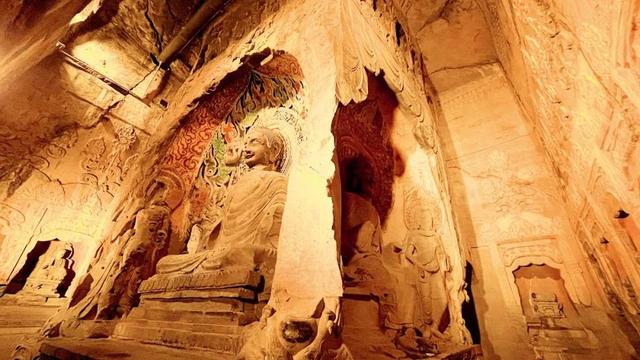
Handan Fahua Cave Grottoes.
1. Northern Grottoes (Beixiangtang)
The Northern Grottoes are renowned for their grand scale and intricate artistry. Notable features include:
– The Great Buddha Cave (Dafodong): This iconic cave houses a majestic 5-meter tall statue of Shakyamuni Buddha, surrounded by stunning flame motifs. The interplay of light and shadow here creates a breathtaking experience, particularly when the afternoon sun streams in.
– The Sutra Carving Cave (Kejingdong): Often hailed as “China’s First Sutra Cave,” the walls are adorned with thousands of characters from important Buddhist texts, making it a must-visit for those interested in ancient calligraphy and religious history.
– The Shakyamuni Cave (Shijiadong): This cave features exquisite carvings and a beautifully detailed ceiling, showcasing the artistic excellence of the Northern Qi Dynasty.
2. Southern Grottoes (Nanxiangtang)
Smaller yet equally captivating, the Southern Grottoes offer a more intimate experience:
– Thousand Buddha Cave (Qianfodong): This grotto is famous for its many small Buddha statues and the stunning lotus motifs on the ceiling, which are a testament to the artistic skill of the creators.
– Hidden Treasures: The quieter environment allows for a more personal connection with the sculptures and carvings, making it a perfect spot for reflection and photography.
3. Cultural and Historical Significance
The Handan Fahua Cave Grottoes date back to the Northern Qi Dynasty (550-577 AD) and are considered one of China’s three major royal grotto complexes. They symbolize a fusion of cultural influences and showcase the evolution of Buddhist art in China. The site is not only a feast for the eyes but also a rich educational experience, offering insights into the historical context of the region.

Handan Fahua Cave Grottoes.
4. Digital Exhibition Center
A modern addition to the site, the Digital Exhibition Center utilizes cutting-edge technology to bring the lost artifacts of the grottoes back to life. Visitors can engage with interactive displays that illustrate the history and significance of the grottoes, providing a poignant contrast between the ancient and contemporary.
5. Chánglè Temple
Located at the foot of the Northern Grottoes, this ancient temple adds to the spiritual ambiance of the area. The temple is known for its historical relics, including a Song Dynasty octagonal pagoda, which enhances the cultural tapestry of the visit.
6. Stunning Natural Scenery
The grottoes are set against the backdrop of the picturesque Xiangtang Mountain, providing ample opportunities for hiking and exploring the surrounding landscapes. The vibrant flora and breathtaking views make this a perfect destination for nature lovers and outdoor enthusiasts.
7. Practical Information
- Visiting Hours: The grottoes are typically open from 8:00 AM to 5:30 PM, with extended hours during holidays.
- Entry Fees: Admission to the Northern Grottoes starts at around 60 CNY, with additional charges for shuttle services.
- Accessibility: A shuttle bus is available from the entrance to the grottoes, making it convenient for visitors of all ages.
A visit to the Handan Fahua Cave Grottoes is not just a journey through time but a profound encounter with the spiritual essence of Buddhism and the artistic legacy of ancient China. Whether you’re a history buff, an art lover, or simply seeking a tranquil getaway, this site promises an unforgettable experience.
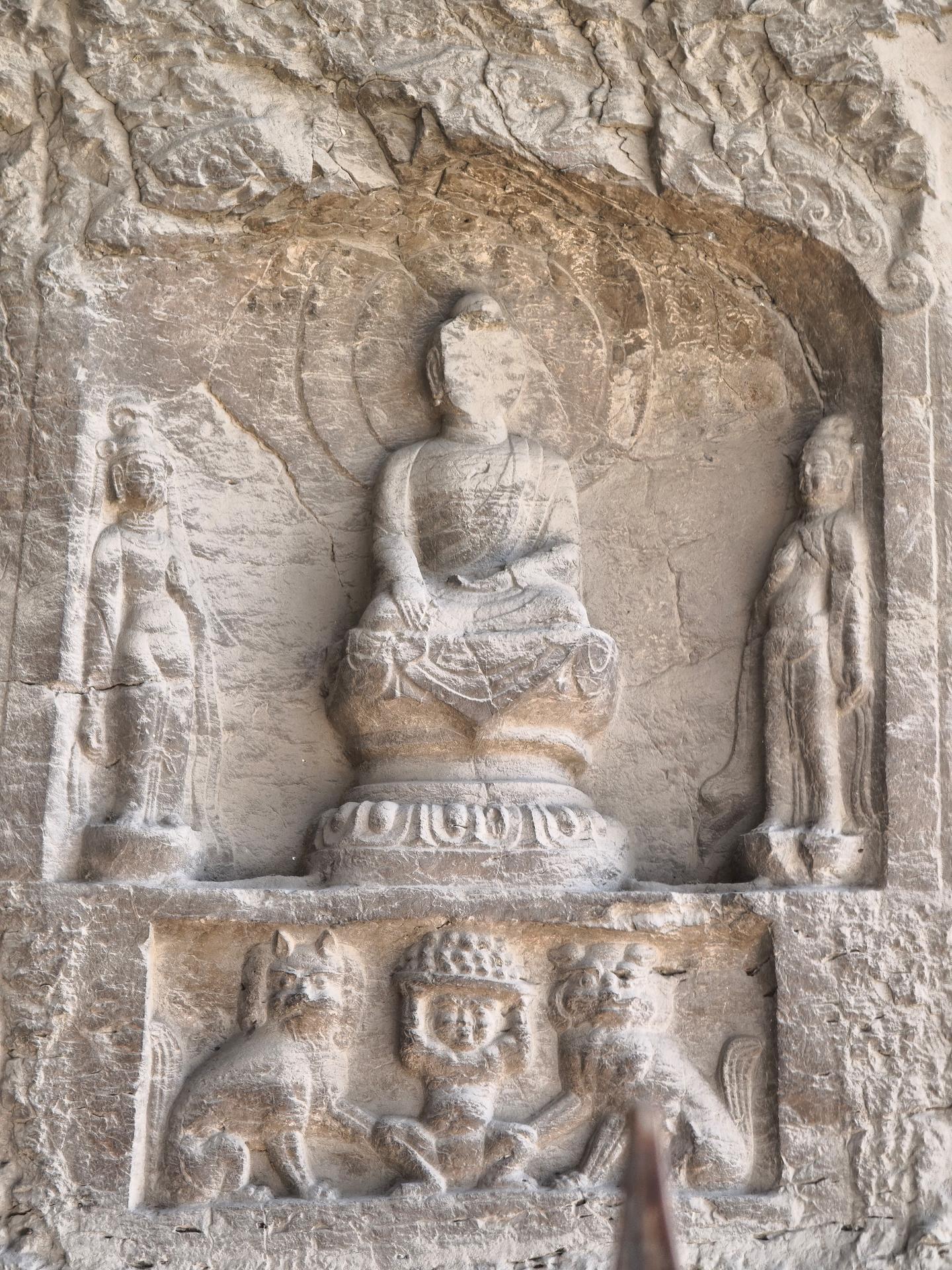
Handan Fahua Cave Grottoes.
Planning Your Visit: A Practical Guide
When planning your visit to the Handan Fahua Cave Grottoes, also known as the Xiang Tang Mountain Grottoes, it’s essential to consider various practical aspects to ensure a smooth and enriching experience. Here’s a comprehensive guide to help you navigate your journey.
Getting There
Location:
The Handan Fahua Cave Grottoes are situated in the Xiang Tang Mountain Scenic Area, within the Fengfeng Mining District of Handan, Hebei Province, China.
Transportation:
– By Train: The fastest option is to take the high-speed train to Handan East Railway Station. From there, a direct shuttle bus operates on weekends, departing at 8:00 AM and returning at 4:40 PM. Tickets for the shuttle can be purchased in advance via the “Xiang Tang Mountain Tourism” app.
– By Car: If you prefer driving, the grottoes are approximately a one-hour drive from downtown Handan. A GPS will guide you to the scenic area, and parking is available at the entrance.
– Public Transport: You can also take Bus 805 from Handan Bus Station to Fengfeng, then transfer to Bus Fengfeng No. 2 to reach the grottoes. Once there, a tricycle service is available for a small fee.
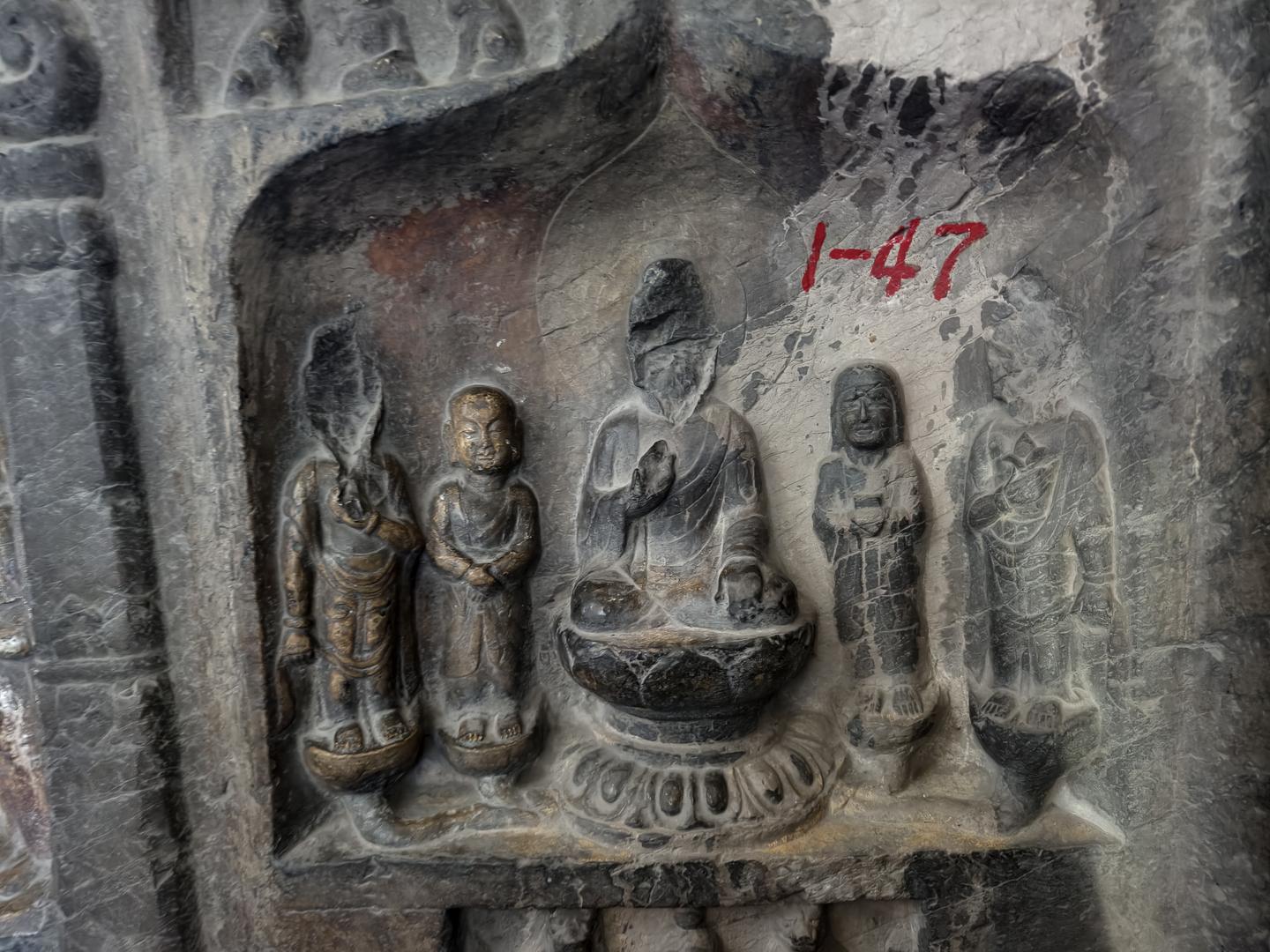
Handan Fahua Cave Grottoes.
Admission Fees
Ticket Prices:
– North Grottoes (Bei Xiang Tang): ¥60 (approximately $9 USD)
– South Grottoes (Nan Xiang Tang): ¥15 (approximately $2.50 USD)
– Shuttle Bus: ¥40 (approximately $6 USD) for a round trip.
Visiting Hours
The grottoes are open daily from 8:00 AM to 5:30 PM, with ticket sales ending at 5:00 PM. On public holidays, operating hours may be extended to accommodate more visitors.
Suggested Itinerary
To make the most of your visit, consider the following itinerary:
-
Start at the Digital Exhibition Center: Before exploring the caves, visit the Digital Exhibition Center to learn about the history and significance of the grottoes. This center showcases 3D reconstructions of lost statues and provides insights into the cultural heritage of the site.
-
Visit Chang Le Temple: This historical site, known as “the first ancient temple of He Shuo,” features a charming ancient pagoda and several relics from various dynasties. It’s an excellent place to appreciate traditional architecture.
-
Explore the North Grottoes: Spend about three hours in this area, which is home to the most impressive features, including:
- Big Buddha Cave (Da Fo Dong): Marvel at the magnificent seated statue of Buddha, which captures the essence of ancient artistry.
- Shijia Cave (Shi Jia Dong): Admire the intricate carvings and the unique architectural style that reflects the cultural blend of different eras.
-
Scripture Carving Cave (Ke Jing Dong): This cave features thousands of carved characters from Buddhist texts, making it a must-see for history enthusiasts.
-
Conclude at the South Grottoes: Dedicate about an hour to this smaller area, which, despite its size, is rich in detail and features beautiful sculptures and carvings.
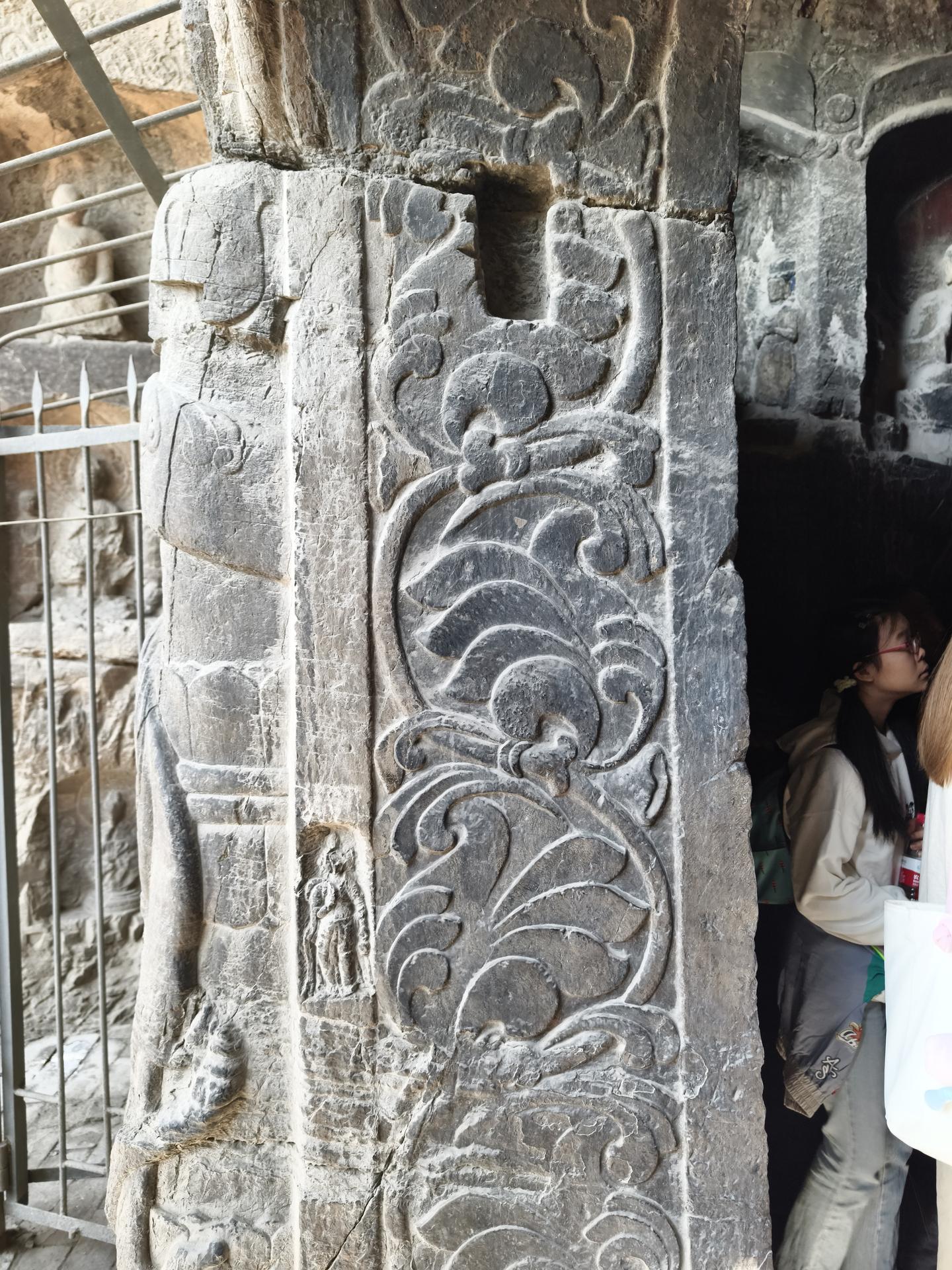
Handan Fahua Cave Grottoes.
Tips for Your Visit
- Wear Comfortable Shoes: The terrain may be uneven, and there are numerous steps, so comfortable walking shoes are a must.
- Stay Hydrated: Bring water, especially during the warmer months, as exploring the grottoes can be physically demanding.
- Respect the Cultural Heritage: Touching the sculptures is prohibited to preserve their integrity, so admire them from a distance.
- Best Time to Visit: Consider visiting during the spring or autumn months when the weather is mild, and crowds are fewer.
Where to Stay
For those wishing to extend their visit, accommodations near the scenic area include local guesthouses and hotels. Staying at one of the establishments at the foot of the mountain allows for a unique experience, especially for those interested in experiencing local culture and cuisine.
Nearby Attractions
If time permits, explore other attractions in the Handan area, such as:
– The Handan Museum: Discover local history and artifacts.
– Yecheng Archaeological Museum: Learn about the ancient civilization that thrived in this region.

Handan Fahua Cave Grottoes.
With careful planning and an adventurous spirit, your visit to the Handan Fahua Cave Grottoes will undoubtedly be a memorable experience, rich in history and cultural significance.
Tickets, Hours, and Booking
When planning your visit to the Handan Fahua Cave Grottoes, it’s essential to know the ticketing details to ensure a smooth experience.
Ticket Prices
- North Grottoes (Beixiang Hall):
- Standard entry: 60 CNY (approximately $9 USD)
- Entry including shuttle service: 100 CNY (approximately $15 USD)
- South Grottoes (Nanxiang Hall):
- Entry fee: 15 CNY (approximately $2 USD)
Shuttle Services
For those looking to conserve energy, especially when navigating the scenic but hilly terrain, a shuttle service is available. The shuttle ride is included in the ticket that combines entry to both grottoes.

Handan Fahua Cave Grottoes.
Operating Hours
The grottoes are open from 8:00 AM to 5:30 PM. Note that the last admission is at 5:00 PM, so plan your visit accordingly to make the most of your time exploring the historical treasures.
Discounts
Students and seniors may qualify for discounts, so be sure to bring valid identification to take advantage of these offers.
Purchasing Tickets
Tickets can be purchased at the entrance or through the official Handan tourism app. If you’re planning to visit during peak seasons or weekends, it’s advisable to buy your tickets in advance to avoid long queues.
Additional Tips
- Keep your ticket safe as it will be checked at various points throughout the grotto area.
- Make sure to wear comfortable shoes, as exploring the grottoes involves walking up steep paths and numerous steps.

Handan Fahua Cave Grottoes.
Enjoy your journey through this remarkable site, rich in history and stunning artistic achievements!
How to Get There
Reaching the Handan Fahua Cave Grottoes is a blend of convenience and scenic travel, making it an accessible destination for both local and international visitors. Here’s a comprehensive guide to navigating your way to this historical gem.
Getting There
By Train
The fastest way to reach the Handan Fahua Cave Grottoes is via high-speed train. The nearest major station is Handan East Railway Station (邯郸东站), which connects to numerous cities across China. From Beijing, for example, the journey takes about 2 hours. Tickets can be purchased online or at the station.
Direct Shuttle Bus
From Handan East Railway Station, a direct shuttle bus service operates on weekends. The bus departs at 8:00 AM and arrives at the grottoes around 9:30 AM. The return trip leaves the site at 2:00 PM and arrives back at the station by approximately 4:00 PM. It is advisable to book your tickets in advance through the “响堂山旅游” mini-program to secure your seat.

Handan Fahua Cave Grottoes.
By Car
If you prefer the freedom of driving, renting a car or using a taxi is an excellent option. The grottoes are about a one-hour drive from downtown Handan. The drive takes you through picturesque landscapes, particularly refreshing during the spring and autumn months. There are parking facilities available at the entrance of the scenic area, with reasonable fees.
Local Bus Services
For those relying on public transport, local buses are a viable option. You can take bus number 805 from Handan Bus Station to Fengfeng, then transfer to bus number 2 to reach the grottoes. This option is more time-consuming but allows you to experience the local culture along the way.
Inside the Scenic Area
Once you arrive, you will find that the grottoes are located within a scenic area that requires some walking to explore fully. Here are your options for getting around:
-
Shuttle Services: Within the scenic area, shuttle buses are available to take you closer to the grottoes. Be prepared to walk around 1.5 kilometers from the entrance to the main grotto area if you choose not to use the shuttle.
-
Hiking Trails: For the adventurous, there are well-marked hiking trails leading up to the grottoes, which provide a chance to enjoy the natural beauty of the surrounding landscape. Expect to encounter a number of steps and inclines, so wear comfortable shoes and carry water.
Tips for a Smooth Journey
- Plan Ahead: Check the train and bus schedules in advance, especially if traveling during national holidays when services may be limited or crowded.
- Timing: Aim to arrive early in the day to avoid peak crowds and to have ample time to explore the grottoes and surrounding attractions.
- Stay Nearby: Consider staying at local accommodations near the grottoes for a more immersive experience. This allows for evening visits, which can be magical with the illuminated caves.
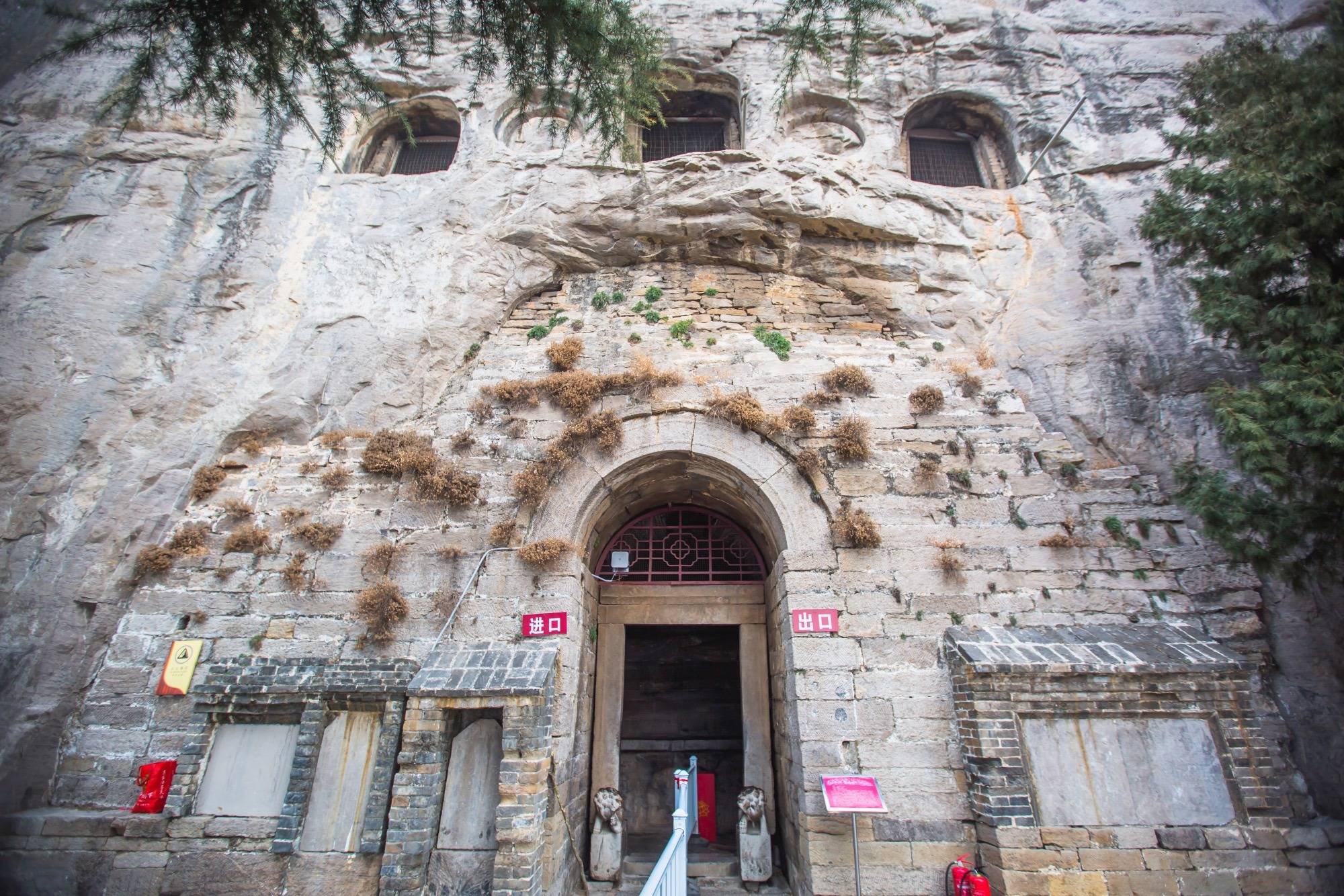
Handan Fahua Cave Grottoes.
By utilizing these transportation options, your visit to the Handan Fahua Cave Grottoes will be both enjoyable and memorable, providing a seamless blend of culture, history, and natural beauty.
Local Cuisine and Accommodation
When visiting the Handan Fahua Cave Grottoes, you’ll find a range of dining and accommodation options that enhance your experience of this historical site.
Dining Options
-
Local Delicacies at the Folk Village
A must-try dish is the “Sanxia Guo” (三下锅), a local hotpot style meal that is not only delicious but also perfect for sharing. This communal dish features a variety of meats and vegetables cooked in a flavorful broth, allowing you to savor the essence of Handan’s culinary tradition. Located within the scenic area, it’s an ideal spot to refuel after exploring the grottos. -
Traditional Breakfast
Start your day with a classic Handan breakfast featuring Doumo (豆沫) paired with Zha Ma Tang (炸麻糖). Doumo is a nutritious soybean paste that pairs excellently with the crispy, sweet fried sesame candy. This hearty meal will energize you for a day of exploration. -
Street Snacks
While exploring, keep an eye out for local vendors offering Er Mao Shao Ji (二毛烧鸡) and Guo Ba Huo Shao (郭八火烧). These savory snacks are perfect for a quick bite and represent the rich street food culture of Handan. They are often sold in convenient take-out portions, so you can enjoy them on the go.
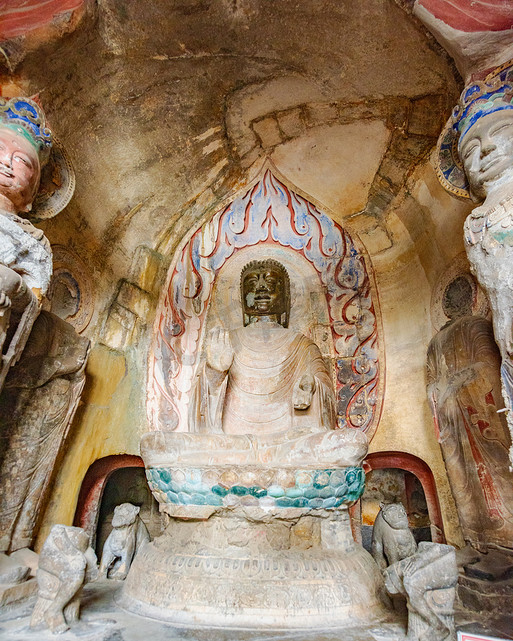
Handan Fahua Cave Grottoes.
Accommodation Choices
-
Xiang Tang Mountain Resort
For a comfortable stay, consider the Xiang Tang Mountain Resort, located at the foot of the mountains. Offering cozy accommodations with stunning views, this resort provides easy access to the grottoes. Additionally, guests can enjoy local dishes at the on-site restaurant, making it a great base for your visit. -
Zao Shu Huang Ancient Village Guesthouse
Experience traditional living by staying at a guesthouse in Zao Shu Huang Ancient Village. This quaint accommodation option offers a unique glimpse into local culture and is surrounded by beautiful natural scenery. The guesthouse is known for its warm hospitality and serves home-cooked meals with local ingredients. -
Handan City Hotels
If you prefer staying in the city, Handan offers a range of hotels from budget to luxury. Many of them provide modern amenities and easy access to public transport, making it simple to reach the Fahua Cave Grottoes. Look for options that include breakfast to kickstart your day of exploration.
Whether you’re indulging in local cuisine or resting in a cozy accommodation, your visit to the Handan Fahua Cave Grottoes will be both delightful and memorable.
Frequently Asked Questions
-
What are the opening hours of Handan Fahua Cave Grottoes?
The grottoes are open daily from 8:00 AM to 5:30 PM, with ticket sales ending at 4:30 PM. During public holidays, hours may extend to accommodate more visitors. -
How do I get to Handan Fahua Cave Grottoes?
The most convenient way to reach the grottoes is via high-speed rail to Handan East Station, where direct shuttle buses to the site are available. Alternatively, you can drive or take a taxi from the city center. -
Is there an entry fee for the grottoes?
Yes, the entry fee is approximately 60 CNY (about 9 USD) for the North Grottoes, which includes access to the digital exhibition center. An additional charge applies if you wish to use the shuttle service. -
What should I wear when visiting the grottoes?
Comfortable walking shoes are recommended, as you will be walking on uneven terrain and climbing stairs. Light, breathable clothing is also advisable, especially during the warmer months. -
Are guided tours available at the grottoes?
Yes, guided tours can be arranged, which provide detailed insights into the history and significance of the grottoes. It is advisable to book a guide in advance, especially during peak tourist seasons. -
Can I take photos inside the grottoes?
Photography is permitted in most areas of the grottoes, but be mindful of restrictions in specific sections, particularly where flash photography may be prohibited to protect the artwork. -
Are there any dining options available near the grottoes?
Yes, there are small food stalls and restaurants within the scenic area where you can enjoy local snacks and meals. It’s a good idea to try the local specialties while visiting. -
What other attractions are nearby?
In addition to the grottoes, nearby attractions include the Changle Temple and the digital exhibition center, which showcases the historical significance of the grottoes and the art of the Northern Qi dynasty.

Handan Fahua Cave Grottoes.
Final Thoughts on Your Trip
Visiting the Handan Fahua Cave Grottoes is not just a journey through a stunning landscape; it is an immersive experience that transports you back in time, revealing the profound spiritual and artistic heritage of ancient China. As you wander through the intricate carvings and massive statues, you can almost hear the whispered tales of the artisans who dedicated their lives to creating these masterpieces.
The juxtaposition of the grand Northern Grottoes and the more intimate Southern Grottoes offers a comprehensive view of the evolution of Buddhist art in China, allowing visitors to appreciate the nuances of craftsmanship across different eras. Each cave tells a story of devotion, culture, and history that begs to be explored.
Whether you’re a history buff, an art enthusiast, or simply a curious traveler, the Fahua Cave Grottoes provide a unique glimpse into a world that has shaped the spiritual fabric of the region. As you stand before the giant Buddhas and intricate carvings, take a moment to reflect on the passage of time and the enduring legacy of these remarkable sites. Plan your visit, and allow the echoes of the past to resonate within you. Handan’s hidden gem promises to leave you awestruck and inspired, making it a must-see destination for anyone seeking a deeper connection to China’s rich cultural heritage.

